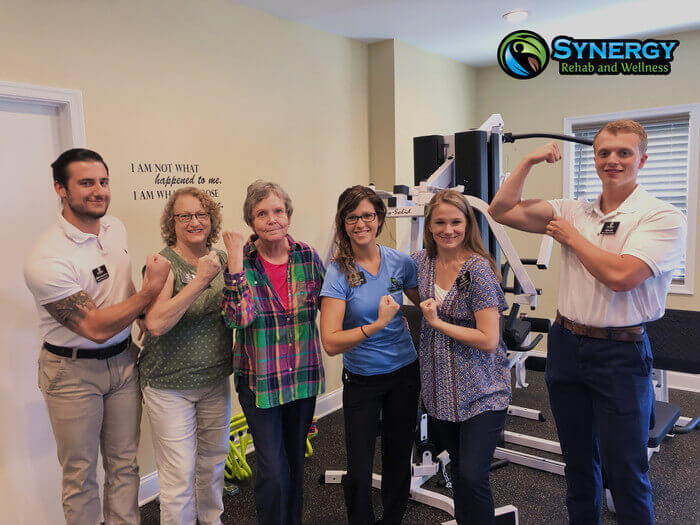Have You Been Living in Pain? Our Physical Therapists Have Got Your Back
Back pain is, to this day, one of the most common complaints among Americans. Whether you experience occasional pain in your back or deal with recurrent chronic back pain, it can make it extremely difficult to complete your daily tasks. But have you ever started wondering if your back pain was a sign of a more serious condition?
The spine is made up of a complex series of bones called vertebrae. There are cushioning pads between each of the vertebrae that act as shock absorbers, making bending, walking, and moving around in general every day without pain, possible.
But if these little cushioning discs are injured, the soft center can actually rupture and cause severe pain. This type of injury is often referred to as a herniated or slipped disc, and while there is no cure for the condition, physical therapy can help manage chronic pain.
Could a herniated disc be the cause of your back pain?
When experiencing back pain, it can be tempting to simply visit your general physician in search of a quick solution.
However, in many cases, all that a general physician can offer in the way of pain relief is a prescription for painkillers. Alternatively, an experienced physical therapist can offer a variety of treatment options that are designed to target the root cause of your reoccurring back pain.
Some of the most common treatment options recommended by our physical therapist for herniated disc pain include:
- Ultrasound therapy or electrical muscle stimulation for fast pain relief and deep penetration of the targeted area
- Alternating treatment with ice and heat to reduce inflammation and soothe sore muscles
- Therapeutic massage to help ease sore muscles
- Aerobic exercises like walking or using a stationary bicycle
- Stretching exercises that help to keep the muscles in the back flexible
Common causes of herniated discs
The vertebrae and cushioning discs in the spinal column can become injured in a variety of different ways.
However, when dealing with a herniated disc, injuries are most often the result of:
- Improper lifting resulting in sudden strain
- Work-related or overuse injuries where the spine has been twisted violently
- Excessive weight gain and obesity
- The natural aging process or degeneration
Are you experiencing any of these common symptoms?
Herniated discs are one of the most common back pain complaints. They typically occur in people aged 35 to 55 years but can affect physical therapy patients of all ages. In certain cases, a herniated disc may show no outward symptoms at all.
But for those dealing with recurring pain from a herniated disc, the following symptoms are also common:
- Neck spasms affecting the muscles in the neck and shoulder area.
- Neck pain that stays centered in the back and side areas of the neck. This type of pain can increase in severity when bending or turning the neck.
- Pain radiating out from the shoulder, arm, and sometimes traveling down to the hands and fingers.
- Pain in the shoulder blade area.
If you are experiencing any of these symptoms, physical therapy can help. In fact, according to SpineUniverse,
“Physical therapy often plays a major role in herniated disc recovery. Its methods not only offer immediate pain relief, but they also teach you how to condition your body to prevent further injury.
There are a variety of physical therapy techniques. Passive treatments relax your body and include deep tissue massage, hot and cold therapy, electrical stimulation (eg, TENS), and hydrotherapy.”
Ready to find the relief you’ve been looking for?
If you have had recurrent back pain, or pain in your neck or shoulder, you may have a herniated disc.
According to The National Institute of Health, “The highest prevalence [of herniated disc cases] is among people aged 30-50 years, with a male to female ratio of 2:1. There is little evidence to suggest that drug treatments are effective in treating herniated discs.”
By using targeted treatments and physical therapy exercises, our physical therapist can help you manage your herniated disc pain and prevent the use of prescription drugs or more invasive treatment options.
Ready to learn more about how physical therapy treatments can relieve herniated disc pain? Contact Synergy Rehab and Wellness today to get started on the first steps of your treatment plan!


